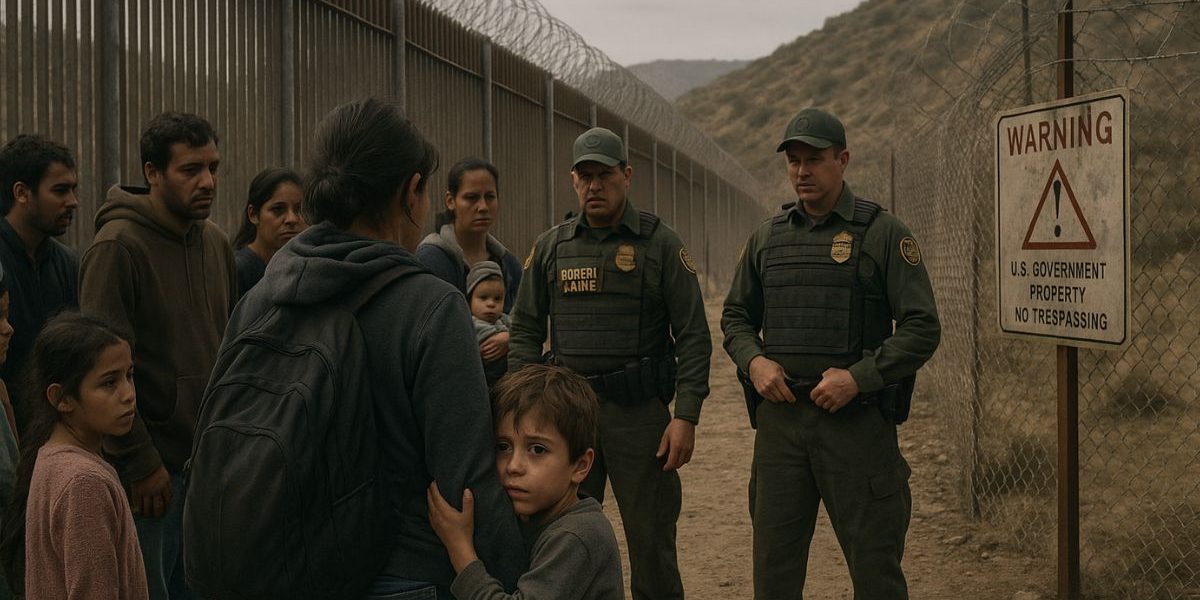Crossing a border often brings hope for a better life, safety, or opportunity. But for many, the journey includes harsh treatment, long waits, and uncertainty. Human rights concerns at borders have become more visible as migration increases and governments tighten enforcement. These concerns raise questions about how countries can protect their borders while still respecting the dignity and safety of every individual.
People fleeing violence, poverty, or persecution often arrive at borders in a vulnerable state. Whether they are seeking asylum or trying to reunite with family, their basic rights still matter. The treatment they receive can leave lasting effects—not just physically, but emotionally and legally.
Key Issues in Border-Related Human Rights
This article looks at common human rights concerns faced at borders:
- Use of detention and conditions in holding centers
- Family separation during processing
- Access to asylum procedures and legal support
- Border enforcement practices and excessive force
- International standards and government accountability
Each of these topics highlights the need for balanced policies that keep people safe while respecting legal obligations.
Detention and Basic Living Conditions
Many countries detain migrants and asylum seekers while reviewing their cases. These detention centers are often overcrowded and lack basic services. People may go without proper food, medical care, or access to phones and legal help.
In some cases, children and families are held for long periods. This can cause stress and trauma that affect their long-term health. There are also reports of unsanitary conditions, inadequate sleeping arrangements, and poor mental health support.
International guidelines suggest that detention should only be used as a last resort. Yet, it remains a first response in many border situations. Finding alternatives that allow people to live in the community while their cases are reviewed could reduce harm.
Family Separation Policies
Separating parents and children during processing is one of the most emotional issues in border enforcement. This has happened in various countries as part of zero-tolerance policies or when adults are detained separately from minors.
The result is confusion, fear, and difficulty reuniting families later. Even when separation is meant to protect children, the lack of communication and support often does more harm than good.
Keeping families together, where safe and appropriate, supports both human rights and better case outcomes. It also lowers the risk of trauma for young migrants who may already be dealing with difficult past experiences.
Access to Asylum and Legal Protection
Everyone has the right to seek asylum from danger, but many are blocked by barriers before they can apply. Some are turned away at ports of entry without explanation. Others face complex paperwork, language barriers, or lack of access to lawyers.
In some border regions, fast-track processes are used that limit time for case preparation. This puts people at risk of being sent back to unsafe conditions without a fair hearing.
Improving access to legal information, interpretation services, and trained support staff can make a big difference. It helps ensure that those with valid claims are not overlooked and that the system functions with fairness.
Border Enforcement Practices
Enforcement officers play a vital role in maintaining order and safety. But in some areas, force is used in ways that raise concerns. There have been reports of physical abuse, verbal threats, and pushbacks where migrants are denied the chance to apply for protection.
Some patrol strategies involve long waits in harsh environments with little shelter or access to services. Others rely on private contractors with less training in human rights law.
While security is part of border management, the use of force must be proportional and respectful. Training, oversight, and accountability help reduce the risk of abuse.
International Obligations and Local Realities
Most countries have signed treaties that require them to treat migrants and asylum seekers with respect. These include protections for refugees, children, and those fleeing conflict or persecution.
But real-life policies don’t always match the promises made on paper. Political pressure, limited resources, and security concerns can lead to shortcuts that affect how people are treated.
Balancing national interests with human rights takes effort. It involves cooperation between border agencies, local governments, international partners, and civil society groups. It also requires regular review to make sure that enforcement remains lawful and humane.
The Role of Public Awareness
People often react to border issues based on headlines or political speeches. But behind the numbers are real human stories. Greater public understanding can push decision-makers to improve policies and respect rights.
When the public sees the impact of harsh practices—especially on families and children—it can lead to support for reforms. Advocacy groups, media, and personal stories all play a part in raising awareness.
Transparency from government agencies also helps. Clear reporting on detention, processing times, and outcomes makes it easier to hold systems accountable.
Respect and Safety Can Coexist
Borders matter. They define national space and protect citizens. But they can also become flashpoints where vulnerable people face tough conditions. Respecting human rights at borders does not mean ignoring security. It means finding the right tools, rules, and people to manage movement with care and responsibility.
With the right balance, countries can meet their legal duties, treat people with fairness, and protect those who cross borders in search of safety.
Effective border management is not just about infrastructure or enforcement—it’s about values. Policies must reflect a commitment to dignity and due process, especially for those fleeing violence or persecution. Training officers in humane practices, investing in asylum systems, and ensuring access to legal aid are essential steps toward making borders places of order and compassion, not fear and confusion.
